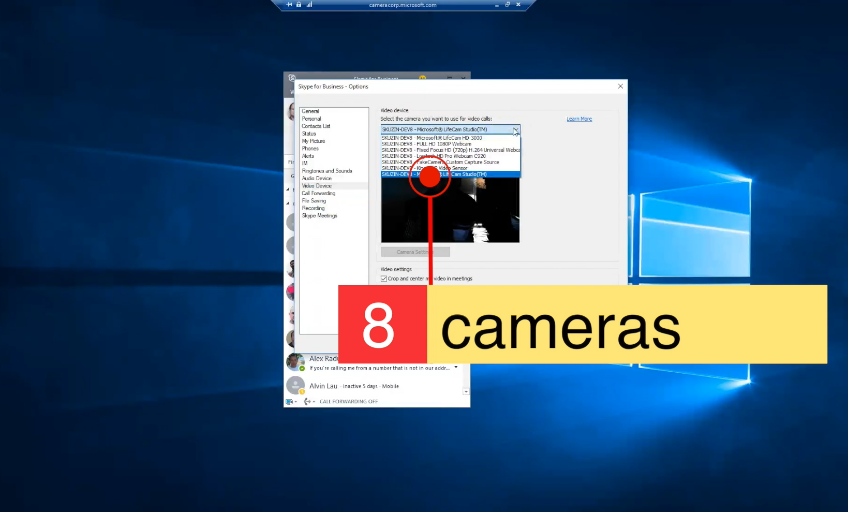
How Hotpatching on Windows Server is changing the game for Xbox
Learn how Microsoft has been using Hotpatch with Windows Server 2022 Azure Edition to substantially reduce downtime for SQL Server databases.



This blog post was co-authored by Jonathan Federico, Product Marketing Manager, Desktop Virtualization and Christian Montoya, Program Manager, RDS.
We released the newest version of Remote Desktop Services (RDS), RDS 2019, on October 2, 2018. RDS 2019 builds on the strong foundation of RDS 2016, letting you rapidly deploy on-premises or in the cloud. RDS 2019 is generally available with Windows Server 2019.
RDS 2019 will give customers the opportunity to leverage fantastic enhancements that make it the optimal version of RDS, to date, with several areas of innovation to improve the administrative and client experiences.
We brought innovation centered around three areas in RDS 2019 – Simplify IT management, User experience, and Improved security.
We have time and again heard from customers that license management should focus on simplification to scale deployments. Over the past few years, we have focused on improving management of Remote Desktop (RD) Licensing servers and entitlement through Active Directory (AD).
We have also invested in providing an enhanced user experience where end users will be able to leverage desktops and apps through RDS 2019 to maximize productivity.


One of our primary goals as the Remote Desktop Services product team is to help improve your security posture for your desktop and app virtualization environments. We have improved security through several enhancements.
We recognize that giving you the ability and making it easier to deploy RDS on Azure gives you a lot of flexibility, scalability, security and several other advantages of Azure. To improve flexibility and ease of cloud adoption, we also support hybrid deployments where the infrastructure roles can be in Azure while the host Virtual Machines (VMs) can be on-premises.
Key enhancements for deploying RDS 2019 on Azure include using Azure Key Vault for simplified certificate management and using Azure SQL DB for the RD licensing high-availability feature.
Lastly, later in October we will announce the availability of Remote Desktop Services (RDS) subscriptions through the Cloud Solution Provider (CSP) program. The availability of RDS in CSP addresses customer needs for additional cost-effective solutions that support desktop and app virtualization.
With RDS Subscriptions, partners can directly sell RDS subscriptions through our CSP program, eliminating the extra step of customers and partners acquiring different licenses through various programs. With this model, customers can enjoy a faster licensing cycle due to CSP integration with other Microsoft licenses including Windows Server, SQL Server, and Office to make it easy for partners to simplify the buying process.
For more technical information on RDS 2019, please refer to the RDS documentation page.
Download Windows Server 2019 that includes RDS 2019 now.
Q: When will I be able to download the final version of Windows Server 2019?
A: Windows Server 2019 that includes RDS 2019 became generally available on October 2, 2018. It is available for evaluation and download through Volume Licensing Service Center (VLSC).
Q: Is Remote Desktop Server included in Windows Server 2019?
A: Yes. Remote Desktop Server 2019 will be a server role in Windows Server 2019.
Q: How do we view this announcement with Windows Virtual Desktop announcement at Ignite?
A: This is the most up-to-date version of RDS to enable running the latest on-premises multi-session virtualization available with Windows Server. Windows Virtual Desktop is a desktop and application virtualization service on Azure. Read the blog post Microsoft 365 adds modern desktop on Azure for more information.
Q: How is RDS on Azure different from Windows Virtual Desktop?
A: RDS is the ideal on-premises desktop and application virtualization solution, with a Windows Server operating system to provide a multi-session desktop experience. When deployed on Azure, you can scale your deployment and manage RD infrastructure roles in your own subscription. Windows Virtual Desktop enables customers to deliver a brand-new multi-session capability with a full Windows 10 experience, with the scale and flexibility of Azure. With this new service, Microsoft manages the infrastructure roles. Windows Virtual Desktop will be available for public preview later this calendar year. For more information, please visit the product page.
Q: Will there be a path to go from RDS to Windows Virtual Desktop?
A: Yes, we are developing Azure documentation guidance for this migration path as Windows Virtual Desktop gets closer to public preview later in calendar year 2018.